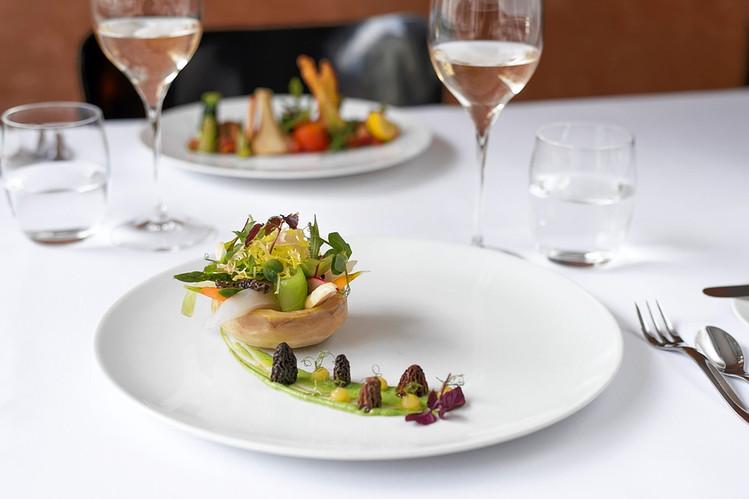Throughout history, the world of haute cuisine has undergone a remarkable evolution, reflecting changes in culture, society, and taste. From the elaborate banquets of the Renaissance courts to the avant-garde creations of modern fusion cuisine, the journey of haute cuisine is a fascinating exploration of culinary creativity and innovation. In this article, we will delve into the rich tapestry of haute cuisine, tracing its evolution from its humble beginnings to its current status as a global phenomenon. Join us as we embark on a journey through the history of haute cuisine, uncovering the secrets and stories behind some of the most iconic dishes and culinary trends of the past and present.
The Rise of Haute Cuisine: From French Origins to Global Influence
Haute cuisine, also known as high cuisine, is a style of cooking that originated in France and has since spread its influence worldwide. This culinary tradition emphasizes the use of high-quality ingredients, intricate preparation techniques, and artistic presentation. Over the centuries, haute cuisine has evolved and adapted to new culinary trends and cultural influences, shaping the way people around the globe experience fine dining.
One of the key features of haute cuisine is its emphasis on precision and attention to detail in every aspect of the cooking process. Chefs specializing in this style of cooking are known for their meticulous approach to creating dishes that not only taste delicious but also look visually stunning. This dedication to perfection has helped elevate haute cuisine to a level of sophistication that has earned it a place among the most esteemed culinary traditions in the world.

Innovative Techniques and Ingredients: A Look at the Modern Evolution
When it comes to the world of cuisine, innovation is key. Chefs around the globe are constantly pushing the boundaries of what is possible in the kitchen, using new techniques and ingredients to create dishes that are both delicious and visually stunning. From molecular gastronomy to foraging for wild edibles, the modern evolution of haute cuisine is truly a sight to behold.
One of the most exciting developments in the world of haute cuisine is the use of liquid nitrogen to create dishes that defy traditional cooking methods. By flash freezing ingredients at incredibly low temperatures, chefs are able to create dishes with unique textures and flavors that simply wouldn’t be possible using conventional cooking techniques. Additionally, the use of rare and exotic ingredients sourced from around the world adds an element of surprise and intrigue to modern haute cuisine, keeping diners on their toes with each new dish.

Challenges and Opportunities: Navigating the Future of Fine Dining
One of the main challenges facing the fine dining industry today is the changing consumer preferences and demands. With the rise of social media and food influencers, diners are now seeking unique and Instagram-worthy dining experiences. This has put pressure on traditional fine dining establishments to adapt and innovate in order to stay relevant in a highly competitive market.
However, with challenges come opportunities for growth and creativity. Fine dining restaurants now have the chance to experiment with new flavors, ingredients, and presentation styles to appeal to a wider audience. By embracing technology and incorporating sustainability practices, restaurants can not only attract new customers but also contribute to a more environmentally conscious dining culture. The future of fine dining is about striking a balance between tradition and innovation to create memorable culinary experiences for every guest.

Preserving Tradition while Embracing Innovation: Tips for Success in the Culinary World
One way to successfully navigate the culinary world is by finding a balance between preserving tradition and embracing innovation. It’s important to honor the roots and heritage of the dishes we create, while also staying open to new techniques and ingredients that can elevate our culinary creations.
One tip for success is to experiment with fusion cuisines, combining traditional flavors and ingredients with modern cooking methods. This can result in unique and exciting dishes that appeal to a wide range of palates. Another strategy is to collaborate with other chefs or experts in different food disciplines to gain fresh perspectives and insights. By staying true to our culinary roots while also exploring new possibilities, we can pave the way for the evolution of haute cuisine.
As we journeyed through the intricate history of haute cuisine, we witnessed the transformation of food from mere sustenance to an art form. From the opulent banquets of the French court to the innovative creations of modern Michelin-starred chefs, the evolution of haute cuisine is a testament to the endless creativity and passion of culinary artists throughout the ages. As we look to the future, we can only imagine what new heights this culinary art form will reach, inspiring generations to come with its decadent flavors and exquisite presentations. Join us in savoring the ever-evolving world of haute cuisine, where every dish tells a story of innovation and tradition, all on a plate.


